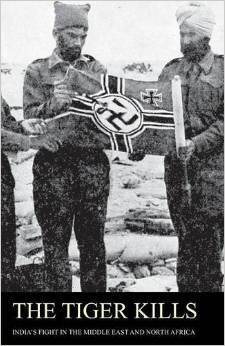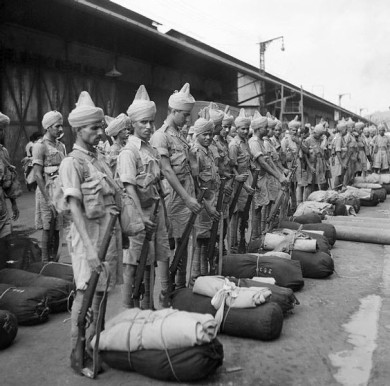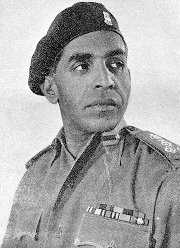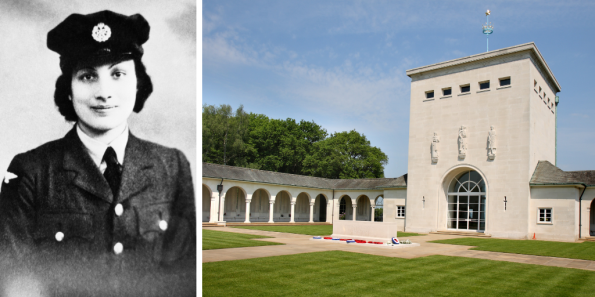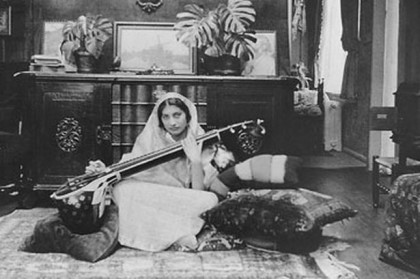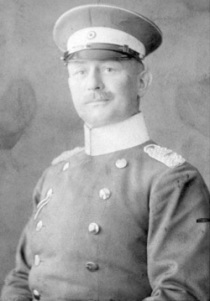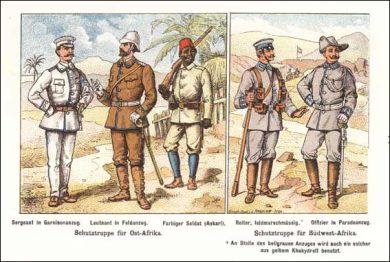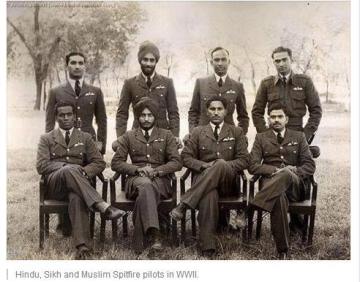THE TIGER KILLS India's Fight in the Middle East & North Africa Paperback – February 12, 2014
by
Having returned to Egypt, part of the Division (the 5th Indian Infantry Brigade) was hurried across to Syria and was heavily involved in the advance on Damascus (June 1941). From 14 to 17 June 1941 the 4th Armoured Brigade was attached to the division. The rest of the Division was heavily involved in the fighting which ebbed and flowed past Tobruk from June 1941 onwards, having been rejoined by 5 Brigade, returning from Syria, in the autumn of 1941. For most of this period the Division was dispersed with units temporarily attached to other formations much to the disgust of Major General Francis Tuker who assumed command of the Division in December 1941. Notable at this time was the breakout at the end of January by 7 Brigade, having been cut off at Benghazi during the Germans' counteroffensive from Agheila and moving 200 miles avoiding the enemy to rejoin the 8th Army. Early in April 1942 the Division was dispersed with 7 Brigade going to Cyprus, 5 Brigade to Syria, 11 Brigade to the Suez Canal Zone for training and the Central India Horse to Iraq after a period of training. By May 1942 11 Brigade was back in the fighting at Tobruk (attached to the Indian 5th Infantry Division). 11th Brigade was caught in the siege of Tobruk which fell on 21 June, and so disappeared from the order of battle for the next 18 months. 5th Brigade was rushed to the desert in June 1942 - after escaping from Mersa Matruh, the brigade held the vital Ruweisat Ridge at Alamein in the fighting of July-August 1942. The situation had become so confused that General Erwin Rommel, also known as the Desert Fox, lost his way and was forced to spend a night in the open. With the dawn came the realisation that he was in the company of 4th Division. With a sigh of relief, he slipped away, undetected. Shortly before the Second Battle of El Alamein in October 1942 the 4th Indian Division was back together again with the 7th Brigade returning from Cyprus and 161st Brigade attached (until December 1942) to fill the gap of the overrun 11th Brigade. The Division had a relatively subsidiary role in the battle, holding in stiff fighting, as a diversionary tactic, the Ruweisat Ridge which was at the centre of the Allied front whilst the breakthrough was planned further North. By December 1942 the Division was once again dispersed but strong representations by its GOC, Francis Tuker, (including his asking to be relieved of command) resulted in the Division being brought together as a fighting entity in March 1943 and it fought with distinction through to the fall of Tunis in May 1943 gaining a particular reputation for its prowess in mountainous country. The Division had the honour of capturing General von Arnim in Tunisia, bringing an end to the North African campaign. Its major battles in North Africa were Benghazi, Tobruk, Wadi Akarit, Enfidaville and Tunis.
http://www.amazon.com/TIGER-KILLS-Indias-Middle-Africa/dp/1783310928
Soldiers came from the Indian Subcontinent which Includes Modern Day India, Pakistan & Bangladesh.
East Africa
Indian artillery in action with an Ordnance QF 18 pounder gun before the capture of Keren in Eritrea
Main article: East African Campaign (World War II)
The Italian conquest of British Somaliland started on the 3 August 1940, the 3/15th Punjab Regiment were amongst the forces on hand and they were quickly reinforced from Aden by the 1/2nd Punjab Regiment on the 7 August. After the battle of Tug Argan the British force were forced to withdraw, the 3/15th Punjab forming part of the rearguard. By the 19 August the British and Indian battalions were evacuated to Aden. British ground losses were 38 killed, 102 wounded, and 120 missing, compared to Italian casualties of 465 killed, 1,530 wounded, and 34 missing.[58]
In December 1940, the 4th Indian Infantry Division was rushed from Egypt to join the 5th Indian Infantry Division in the Sudan. From February to April 1941, the Indian 4th and 5th Infantry Divisions took part in the Battle of Keren,[52] By the end of the campaign the Italian forces had been cleared from Eritrea and Abyssinia 220,000 of them becoming prisoners of war.[52]
http://en.wikipedia.org/wiki/Indian_Army_during_World_War_II#East_Africa
Click on photo for 4th& 5th Indian Division (Sudan, Somalia,Eritrea, Abyssinia and East Africa)
Forgotten Heroes - The Muslim Contribution
With Remembrance Day today, Somaiya Khan-Piachaud and Ayman Khwaja remember the sacrifice of Muslim soldiers, who gave their lives and their limbs in the name of duty in both the first and second World Wars.
http://emel.com/article?id=65&a_id=1699
Grand Mosque of Paris -- Saving Jews During Nazi Occupation of France in WW2
Iranian Schindler That Saved Jews is Celebrated at The Holocaust Memorial & Tolerance Center
Section Officer Noor Inayat-Khan became the first female radio operator to be sent to Nazi-occupied France during the Second World War.
During her mission she was captured and tortured for information but gave nothing away. Noor was killed on the morning of 13 September 1944 and is commemorated by the
Commonwealth War Graves Commission on the Runnymede Memorial. Learn more, here:
http://ow.ly/xKCO50FJc0b
#SouthAsianHeritageMonth
Why Noor Inayat Khan, the Indian princess and decorated British spy who was shot by the Nazis, deserves a statue
ON September 13, 1944, a beautiful Indian princess lay dead on the floor at Dachau concentration camp.
She had been brutally tortured by the Nazis then shot in the head. Her name was Noor Inayat Khan. The Germans knew her only as Nora Baker, a British spy.
The first female radio operator to infiltrate occupied Paris, she was posthumously awarded the Croix de Guerre and the George Cross – one of only three women from the Special Operations Executive to receive the latter medal.
Cont: http://www.mirror.co.uk/news/uk-news/why-noor-inayat-khan-the-indian-princess-104346#ixzz2wjAJvjQe
https://www.facebook.com/ArmedForcesMuslimAssociation/videos/1871605749739416/?hc_ref=NEWSFEED
Noor Inayat Khan: why was the British spy such an unlikely war hero?
The first female radio operator to be sent underground in occupied Paris to aid the French Resistance during World War II was also the most unlikely person for job, writes Pat Kinsella. But who was Noor Inayat Khan, and how did she end up in this perilous position?
Remembering a Heroine of the Second World War
http://www.bbc.co.uk/history/historic_figures/inayat_khan_noor.shtml
Meet the Muslims who sacrificed themselves to save Jews and fight Nazis in World War II
Executed by Hitlers
Army Noor Khan’s Last Word : Liberte (Azadi)!
https://www.thecitizen.in/index.php/en/NewsDetail/index/7/18239/Executed-by-Hitlers-Army-Noor-Khans-Last-Word--Liberte-Azadi?fbclid=IwAR0xBPkRf59ty3FtMA7yMmvqCg10Yn0kBv4IjcKSV-mxnMWoqLZNyhMhoF8
Revealed: the bonfire of papers at the end of Empire
DG was a code word to indicate papers were for British officers of European descent only
http://www.theguardian.com/uk-news/2013/nov/29/revealed-bonfire-papers-empire
Other interesting Historical links to British/Asians/Blacks
http://www.bbc.co.uk/history/worldwars/wwtwo/colonies_colonials_01.shtml
http://www.historytoday.com/zig-henry/new-commonwealth-migrants-1945-62
http://www.blackpresence.co.uk/category/black-history/black-soldiers-black-history/
http://www.blackpresence.co.uk/black-british-soldiers-the-forgotten-fighters/
http://www.iwm.org.uk/history/west-indian-soldiers-in-the-first-world-war
http://www.caribbeanaircrew-ww2.com/
http://www.caribbeanaircrew-ww2.com/wp-content/uploads/2010/11/RAF-Spirit2006.pdf
https://www.facebook.com/media/set/?set=a.399578800129966.96852.351401081614405&type=1
http://www.casbah.ac.uk/cats/archive/233/IWMA00002.htm
---------------------------------------------------------------------------------------------------------------
Welcome to Kaiser’s Cross
This site serves as a monument to all soldiers who fought and all casualties of World War 1 and the Colonial Wars in the period leading up to World War 2. It intends to honor soldiers of all nationalities and all races and if you think the soldiers of your particular country are not shown enough... we invite you to visit the section "What YOU can do for the site"... I would be very happy to put up any articles you may have floating around...
http://www.kaiserscross.com/188001/269501.html?hc_location=ufi
Battle of Tanga: British invasion of German East Africa Defeated, Assisted by Encounters with African Bees ("Battle of the Bees")
MY REMINISCENCES OF EAST AFRICA
http://www.allworldwars.com/My-Reminiscences-of-East-Africa-by-von-Lettow-Vorbeck.html
The Officia Kaiserliche Schutztruppe, it undertook both Police and Military functions. Each was a self-contained mobile tactical unit and within its organisation was a supply and transport sub-unit. These companies were either known as Feldkompanie (FK) or Schutzenkompanie (SchK). There were fourteen independent companies; overall there were 260 Germans and approximately 2,472 askaris. Each company had from two to four machine guns and also 250 carriers to carry supplies and ammunition. There were more Europeans in a German company, about twenty German officers and NCOs, with approximately 200 askaris, making the ratio something like one European to ten Africans and the KAR ratio was roughly 30 Africans to 1 European. Again, this is another significant factor in that it had a long term effect on the performance of the German troops during the war, particularly during difficult operations.
The 29th Punjabis (consisted of Sikhs and Muslim Punjabis), the two Imperial Service Battalion made up from the states of Bhurtpore, Jind, Kapurthala and Rampur and
others joined the Belgian Colonial Government against the Germans in East Africa.
At the outbreak of war, the Belgians had been reluctant to abandon the neutral pose in Africa to which they had agreed in 1885, in spite of the fact that Belgium itself had been invaded by the German
army on 4th August 1914. Belgian colonial government had to change this posture in the middle of August. The 29th Punjabis landed in Mombasa on the 1st Sept 1914 and reinforced the Kilimanjaro area
where the KAR were and saved the British Protectorate from invasion.
Loyal North Lancashires in East Africa
King's African Rifles
https://encyclopedia.1914-1918-online.net/article/kings_african_rifles
German Colonial Uniforms
Machine Guns of the Schutztruppe and Overseas Forces
http://s400910952.websitehome.co.uk/germancolonialuniforms/hist%20machine%20guns.htm


